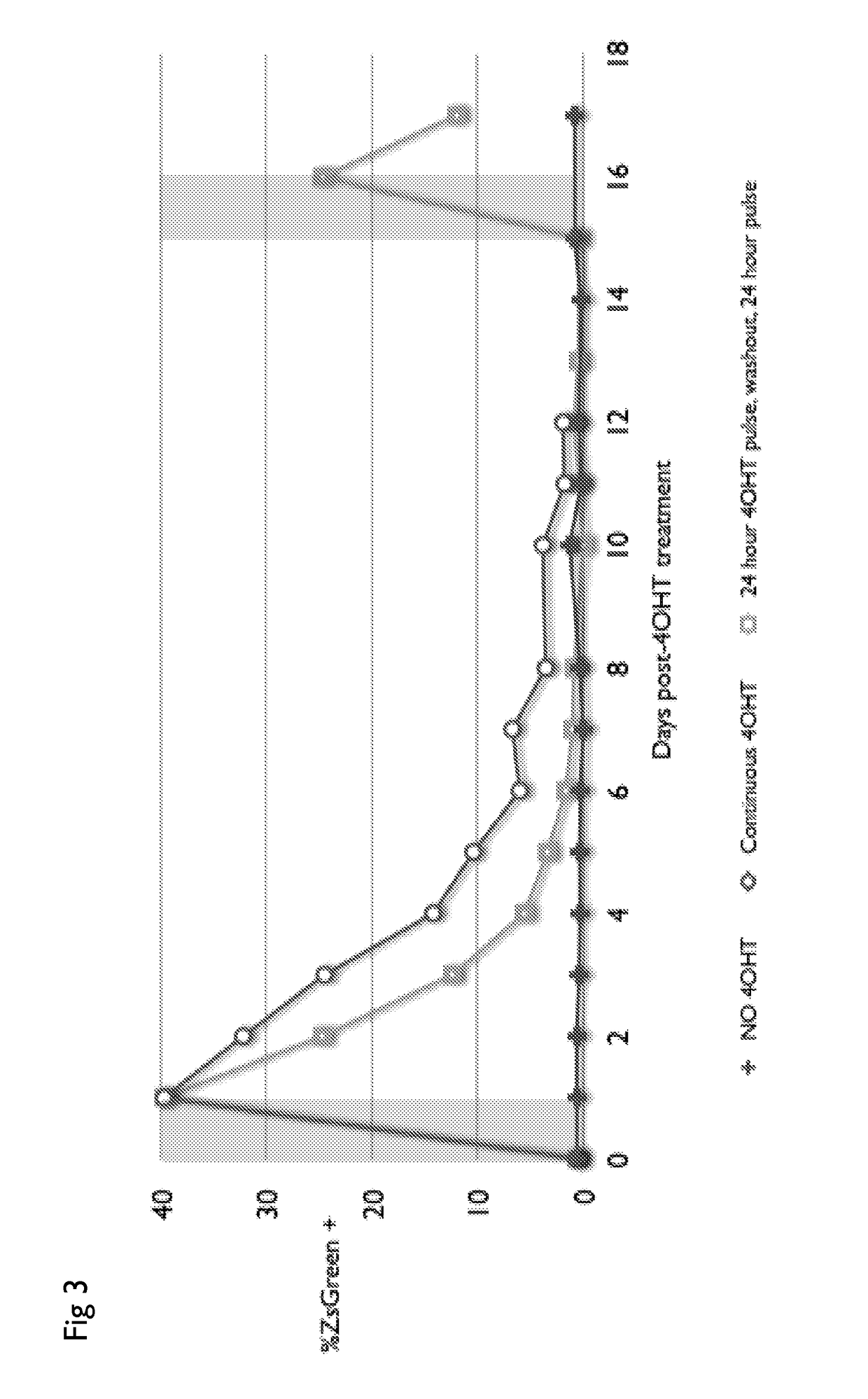Drug regulated transgene expression
a transgene and drug technology, applied in the direction of vectors, dna/rna fragmentation, viruses, etc., can solve the problems of limiting the applicability of car-t cell adoptive therapy, affecting the anti-tumor activity, and causing significant toxicities, etc., to achieve the effect of increasing t cell proliferation and/or cytokine production
- Summary
- Abstract
- Description
- Claims
- Application Information
AI Technical Summary
Benefits of technology
Problems solved by technology
Method used
Image
Examples
Embodiment Construction
Definitions
[0034]Unless defined otherwise, all technical and scientific terms used herein have the same meaning as commonly understood by one of ordinary skill in the art to which the invention pertains.
[0035]“About” as used herein when referring to a measurable value is meant to encompass variations of ±20% or ±10%, more preferably ±5%, even more preferably ±1%, and still more preferably ±0.1% from the specified value.
[0036]Antigen” or “Ag” as used herein refers to a molecule that provokes an immune response. This immune response can involve either antibody production, or the activation of specific immunologically-competent cells, or both. It is readily apparent that an antigen can be generated synthesized, produced recombinantly or can be derived from a biological sample. Such a biological sample can include, but is not limited to a tissue sample, a tumor sample, a cell or a biological fluid such, for example, blood, plasma or ascites fluid.
[0037]“Anti-tumor effect” as used herein...
PUM
| Property | Measurement | Unit |
|---|---|---|
| time | aaaaa | aaaaa |
| time | aaaaa | aaaaa |
| time | aaaaa | aaaaa |
Abstract
Description
Claims
Application Information
 Login to View More
Login to View More - R&D
- Intellectual Property
- Life Sciences
- Materials
- Tech Scout
- Unparalleled Data Quality
- Higher Quality Content
- 60% Fewer Hallucinations
Browse by: Latest US Patents, China's latest patents, Technical Efficacy Thesaurus, Application Domain, Technology Topic, Popular Technical Reports.
© 2025 PatSnap. All rights reserved.Legal|Privacy policy|Modern Slavery Act Transparency Statement|Sitemap|About US| Contact US: help@patsnap.com



